Through the first month of the season, Eduardo Rodríguez was a stabilizing force in a rotation full of unknowns that was bolstering a Red Sox team that was 17-10 through the first month — good enough for the AL East lead. Predominantly relying on his four-seamer, changeup, and cutter, the southpaw was able to generate weak contact and go deep into games. However, for a three-month stretch from the start of May to the end of July, E-Rod was largely ineffective, pitching to a 6.22 ERA but with a 20.1% K-BB, showing underlying promise. In August, Rodríguez has righted the ship with a 3.15 ERA, yet again with an impressive 21.2% K-BB. Fuelling that turnaround was rediscovering the potency of his strengths.
Fastball and Changeup
While he’s now mostly known for his changeup and cutter, Rodríguez came up with the Red Sox as a southpaw with a power four-seamer, reflected in his first three seasons in which he threw the pitch nearly 60% of the time. That’s changed since with the implementation of the cutter while also being more forward with his offspeed pitch.
And a large part of using his other pitches was that the four-seamer wasn’t entirely productive.
But oddly enough, since decreasing his fastball usage, the performance of it has increased — including to a career-high mark this season. What makes it all the more impressive is that the pitch now ranks in the top 10 in CSW% and whiffs this season amongst four-seamers that have been thrown at least 500 times. It’s a top-flight delivery and one that’s improved in large part because of the change in shape this season for Rodríguez compared to the past.
Represented by the furthest left dot in the chart, Rodríguez’s 2021 four-seamer has added vertical movement — over an inch from last season — while also decreasing its horizontal movement from years past, making it less normal and ultimately more difficult to hit.
But what’s also made it a better pitch is the location of it.
This season, Rodríguez has pinpointed the top of the zone with his four-seamer to good effect. With better location and an improved movement profile, it’s fairly self-explanatory as to why Rodríguez has relied on the heater more often this season than he has since his early seasons in the big leagues, steadily increasing the usage on the pitch over the course of the season, from 26.2% in April, to roughly 40% of the time over the next three months, and now operating at nearly half the time since the start of August.
Though Rodríguez’s improvements aren’t just with the four-seamer, but with his changeup as well. At the beginning of the season, Rodríguez threw his changeup like he always did — hard, averaging just about 88 MPH. After leading the Red Sox to victory in the first game out of the All-Star break, Rodríguez noted he tinkered with his changeup and made it a slower offering than what it was in the past. According to the left-hander, this change came on June 5th in a start against those same Yankees, where throwing the changeup around 84 or 85 MPH worked a lot better for him than when throwing closer to 88 MPH. And the results have spoken true of that claim on the surface, with a .327 wOBA on the pitch before June 5 and a .266 wOBA after. Furthermore, the whiffs have also increased with the decreased speed. So if this is the case, then why didn’t Rodríguez do it earlier in his career?
And like the graphic reflects, Rodríguez had success throwing his changeup at elevated velocity before this season yet this season has struggled at the 88+ MPH bracket for the changeup — including generating far more swings and misses in the past than this season. The best explanation for this is the usage and location.
https://gfycat.com/bouncymixedhorseshoecrab
With such late down and away action, the changeup will perform best when working down and to Rodríguez’s arm side, where he’s attained most of his whiffs on the pitch throughout his career.
In 2019, the changeup ended up in that spot frequently.
And before decreasing the velocity on the pitch on June 5th, the location was actually in the zone, rather than pushing the outer extremities of the region.
But since that date, Rodríguez has gotten his changeup back in its desired location.
While it’s not perfect location, it does show better intent with the pitch and as a result, there has been an increase in performance — .281 xwOBA before June 5 and .256 xwOBA post.
What’s The Missing Link?
Despite substantial strides to his four-seamer and changeup, E-Rod is still saddled with an ERA over five — so what are we missing? Why is he struggling? As we alluded to earlier, Rodríguez has suffered from poor luck throughout his career, and this season has probably been the worst case of that. In his last start against Texas, which was on full display, giving up a .460 wOBA in that start with an underlying .210 xwOBA — the largest differential for Rodriguez in an outing this season.
Just take a look at some of these plays.
https://gfycat.com/commonmagnificenticefish
https://gfycat.com/blandevilirishsetter
And then there’s this beauty — which is a good representation of the Red Sox’s play since the Trade Deadline.
https://gfycat.com/minorfineblackpanther
Those three hits had expected batting averages of .050, .120, and .060, respectively. Even though both hits were rather self-inflicted by Rodríguez’s inability to field his position, it’s clear that the combination of poor luck and the Red Sox’s atrocious team defense (-25 OAA/ -4 DRS) are the core reasons why the southpaw’s BABIP is north of .360. But while those things are mostly out of his control, there are some things that Rodríguez could do better that would elevate his ability on the mound.
Again referring to his start against Texas, here’s a refresher of how his pitches fared in that outing.
And what the pitch location looked like:
Like the trends we had covered in the previous section, Rodríguez was superb with the four-seamer notching a 40% CSW — but the rest was suboptimal. The changeup was sprayed arm side and was never a threat to the hitter. Obviously, having that pitch on point going forward will be key to having success going forward. But there will be days when either the four-seamer or the changeup — or both — might not work at their best. In that case, Rodríguez needs a third offering, which allows us to review the rest of his repertoire.
With the cutter, Rodríguez has done a better job this month of keeping the pitch out of the heart of the plate and working it into the shadows. The difference in production, even though we’re talking about minor differences in location, is drastic. In the shadows this season, the cutter had had a .255 wOBA (.181 xwOBA). In the heart? That figure balloons to a .524 wOBA (.431 xwOBA). This means, like his changeup, Rodriguez’s cutter is another ‘feel’ pitch, that needs to be at the edges of the zone to be successful — again, not necessarily the most reliable option.
But this is where pairing the cutter with the sinker would be ideal in forming the perfect third pitch for Rodríguez. Generally, pitching works best with unpredictability. That implies being able to hit most spots in the zone and using your repertoire to achieve that is more than acceptable. Rodríguez definitely has that skill set but is not used currently.
He can work up top with the four-seamer and hit the low, arm side corner of the strike zone with the changeup. But Rodríguez currently has not been able to hit the outer edges of the zone with regularity which is where the sinker and cutter can work together, splitting up the plate if they were to succeed though the results are not quite what you’d expect.
While this used to work in the past, the current version of Rodríguez has not yielded good results on those pitches, denying him the opportunity to tunnel the two and thus form a viable ‘third pitch’.
Conclusion
What made Rodríguez’s 2019 season so superb was his ability to not only pitch effectively but to go deep into games, averaging roughly six innings per start. While that hasn’t been the case for most of this season, Rodríguez has been able to go at least five innings in three of his past four starts and eight of his past 11, showing his capability in that regard.
Part of Rodríguez’s resurgence in the penultimate month of the season has been attributed to leaning heavily into his phenomenal fastball while also locating his changeup better. Though like his last start suggests, the 28-year-old needs a reliable third pitch to be able to lean on when the changeup isn’t quite on. Luckily for Rodríguez, he’s got three other pitches he has a feel for that allow him to work his way towards that all-important offering in any given outing. Though if he can somehow find a way to tunnel his cutter and sinker, the combination could create a phantom third pitch and allow him to navigate the opposing team’s lineup deep into games and get wins for a desperate Red Sox team.
Photo by Leslie Plaza Johnson/Icon Sportswire | Design by Michael Packard (@designsbypack on Twitter @ IG)


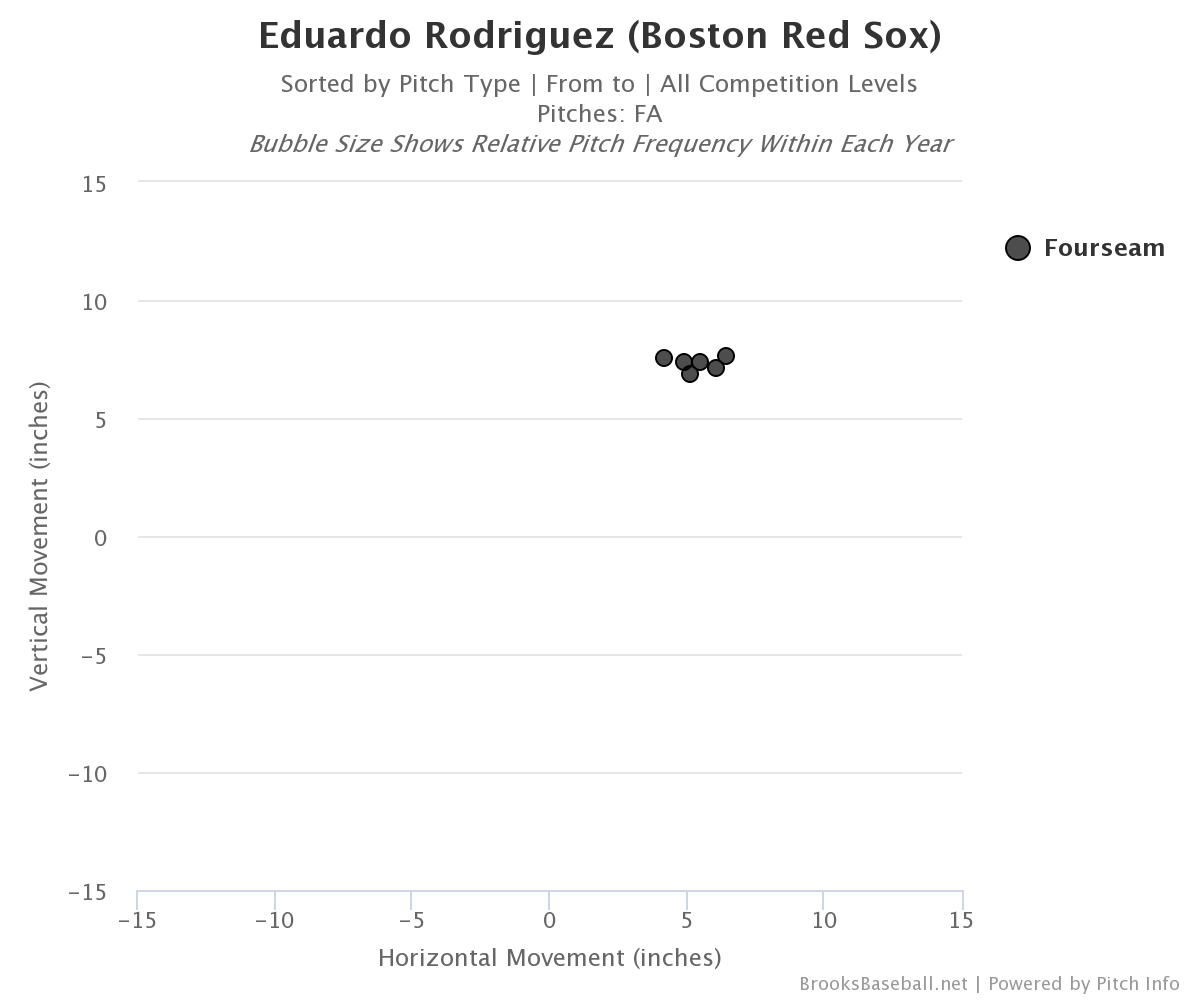
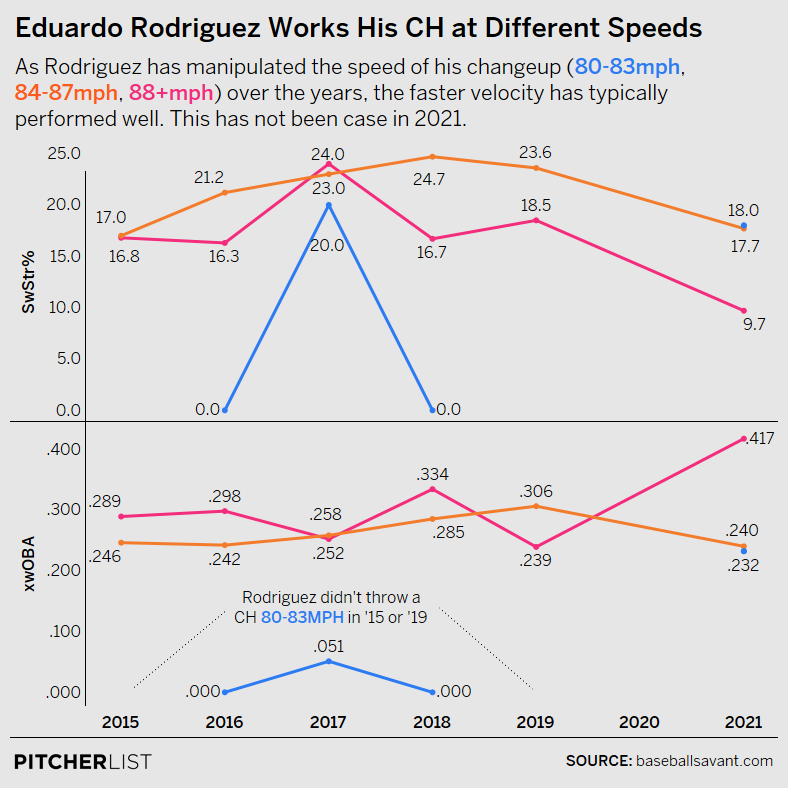
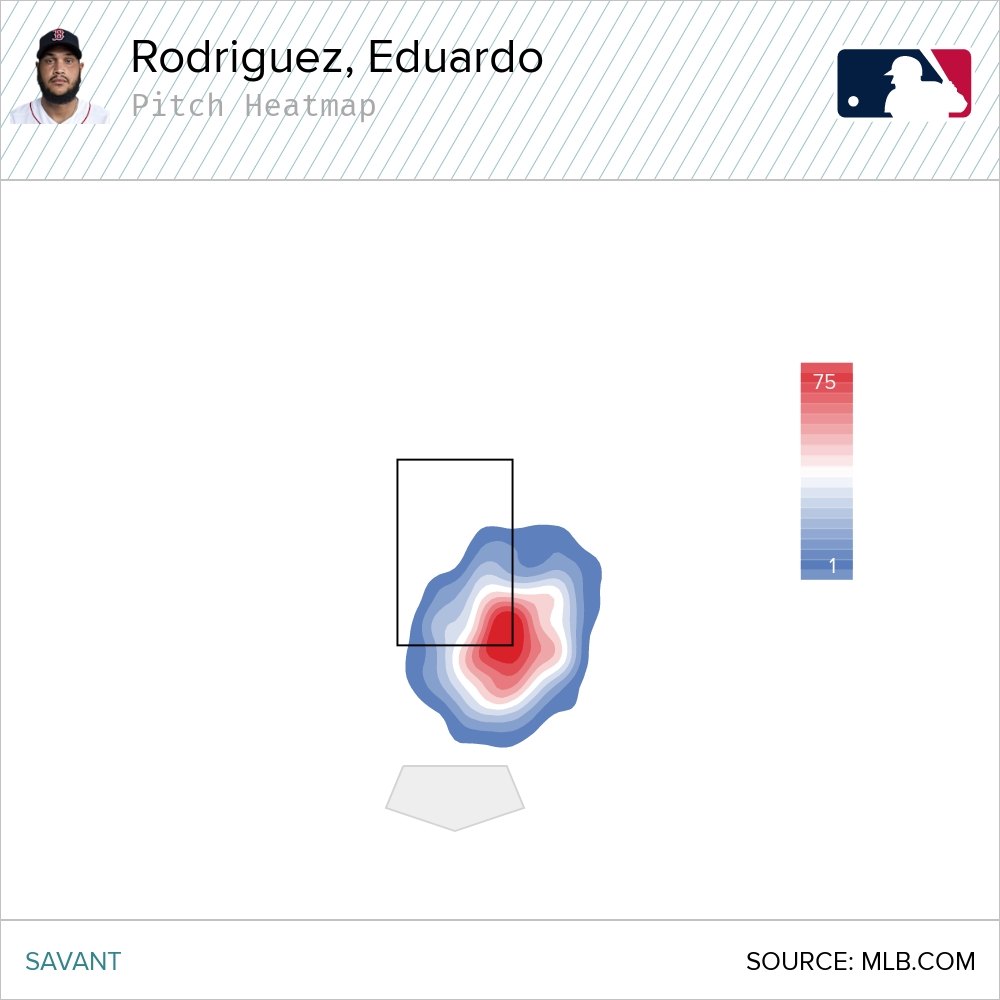
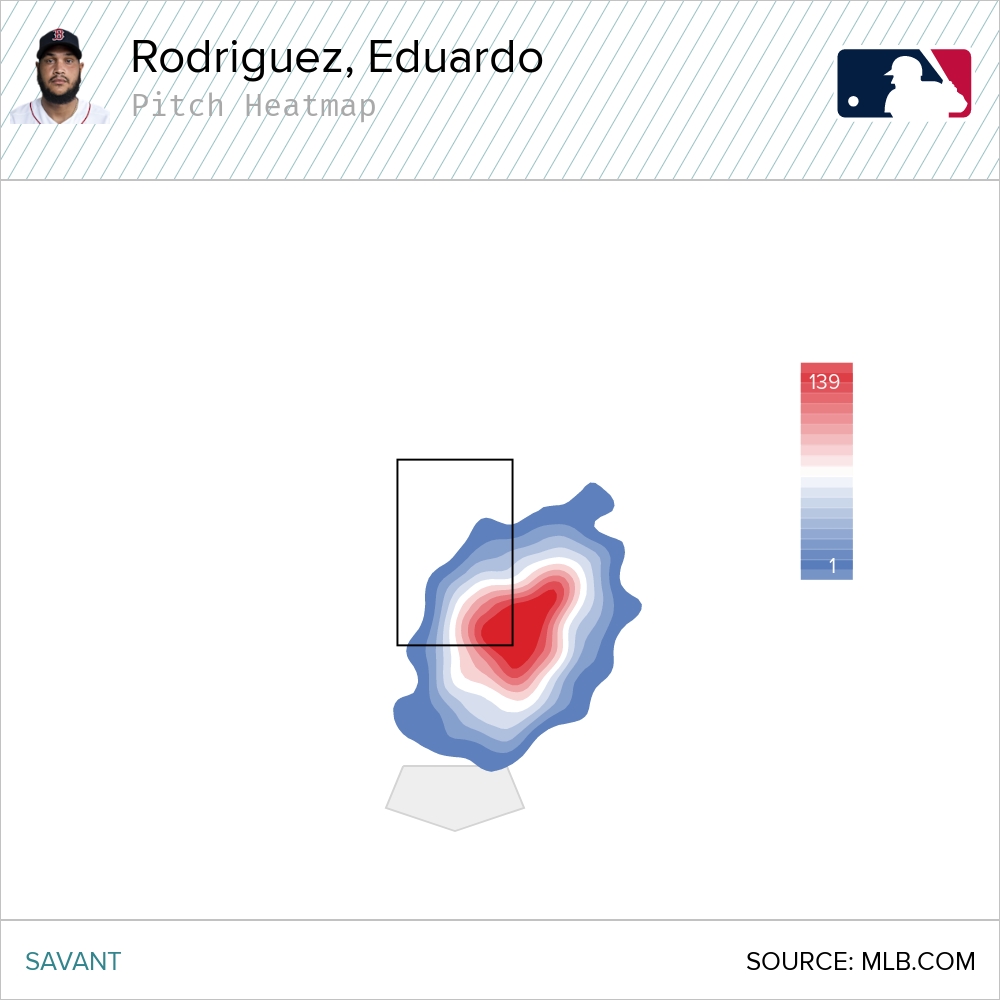
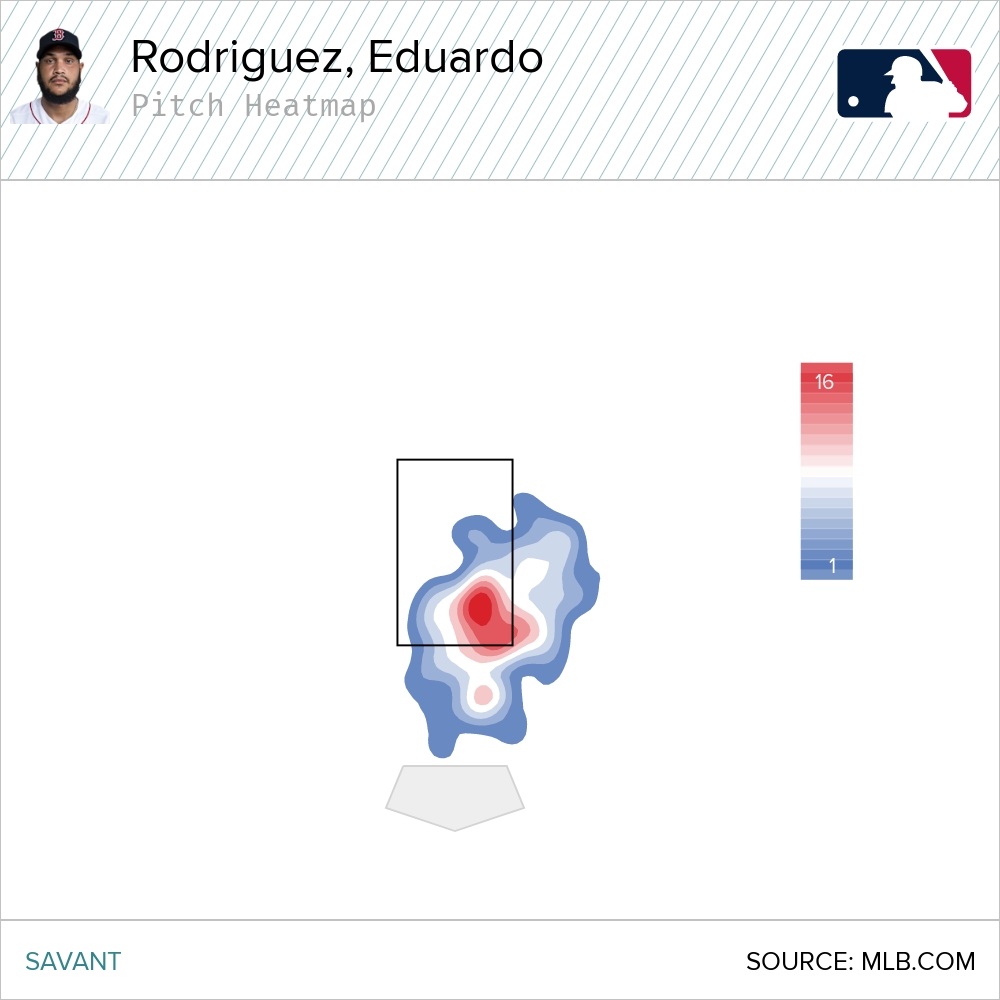


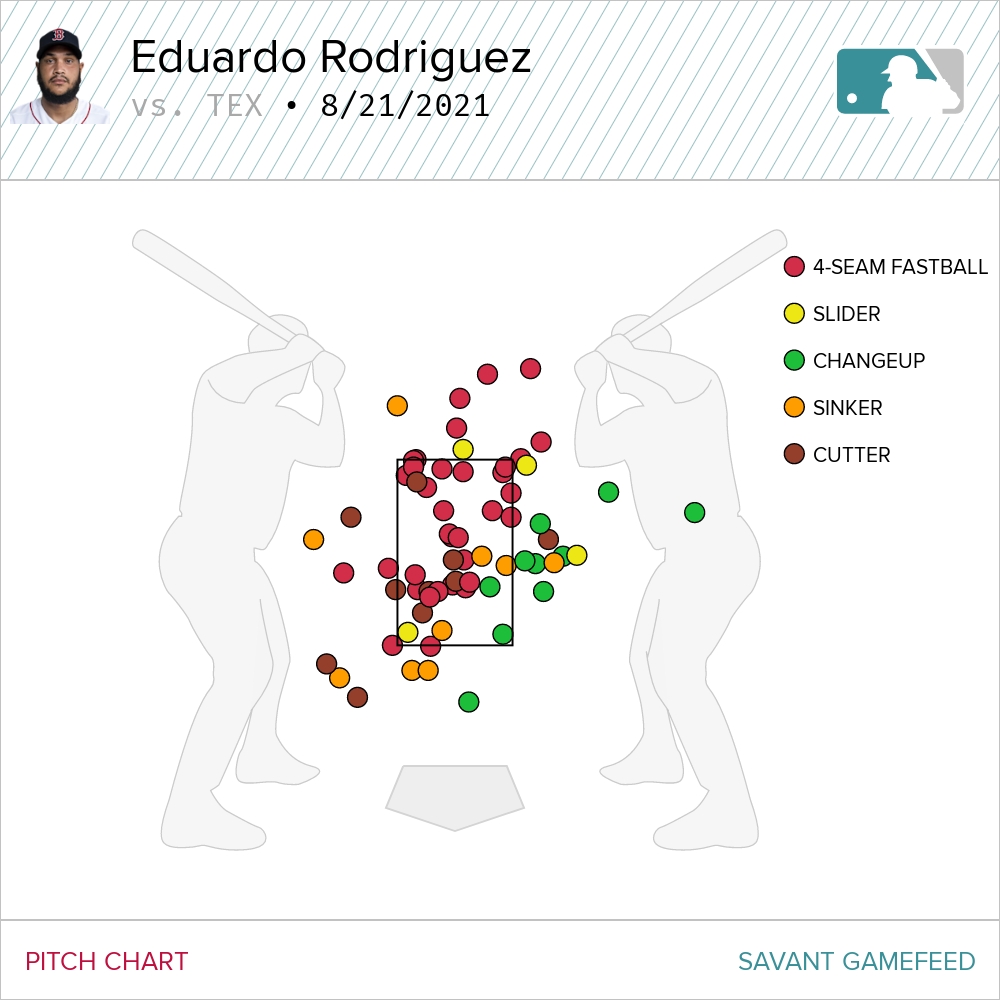

How confident are you that the Sox will make the playoffs, even if E-Rod has a strong September? Seems that their bullpen has been struggling as of late.